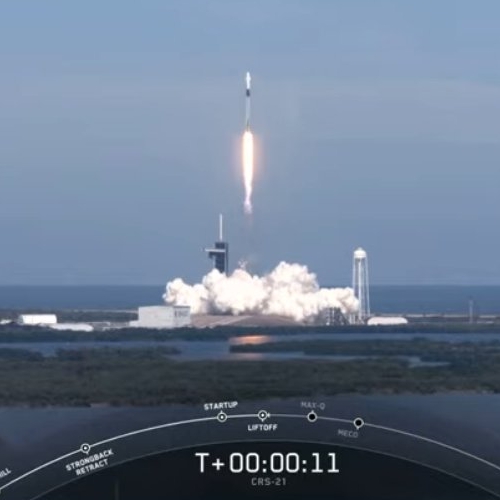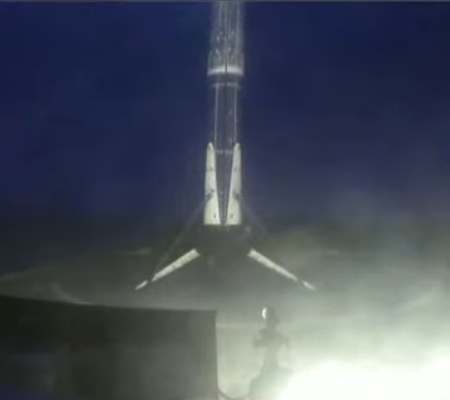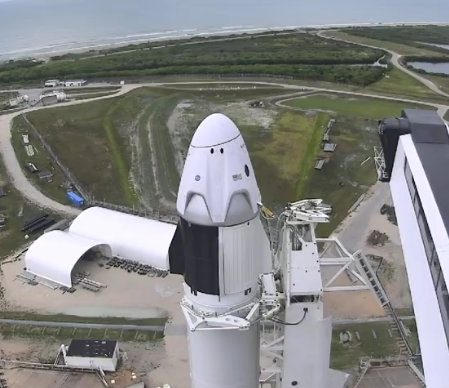Last two passengers on 1st entirely private manned spaceflight revealed
Capitalism in space: The last two passengers for the first entirely private commercial manned spaceflight, dubbed Inspiration4 and paid for by businessman Jared Isaacman, were announced yesterday, along with a launch date no earlier than September 15, 2021.
Isaacman bought the mission partly to fly in space, but also to raise money for St. Judes Children’s Research Hospital. Both Isaacman and Haley Arceneaux, a former St. Judes cancer patient, will fly. Their two new crew members are both experienced in aviation or spaceflight operations, though neither is a professional astronaut with any training in that field.
[Sian] Proctor describes herself as a scientist turned artist and an “analog astronaut” where people live in environments to simulate long-duration spaceflight. She has done four analog missions including NASA’s Hawai’i Space Exploration Analog and Simulation (HI-SEAS) Habitat to simulate a trip to Mars. She is a pilot, scuba diver, “and loves geoexploring our world.” Born in Guam while her father was working at a NASA tracking station there during the Apollo program, she has a B.S. in environmental science, an M.S. in geology, and a Ph.D. in Curriculum and Instruction: Science Education. She was a finalist in NASA’s 2009 astronaut selection.
While a U.S. Space Camp counselor, [Chris] Sembroski conducted simulated space shuttle missions and supported STEM-based education. He served in the Air Force maintaining a fleet of Minuteman III ICBMs and served in Iraq. After leaving the Air Force in 2007, he earned a B.S. in Professional Aeronautics from Embry-Riddle Aeronautical University. He now works for the aerospace industry in Seattle, although he did not specify what company.
Their spacecraft will be Resilience, the Dragon capsule that flew the first operational manned commercial crew to ISS, and is presently docked to the station. For the Inspiration4 flight however SpaceX is going to install a large domed window at the capsule’s nose, replacing the docking port that will not be needed.
Capitalism in space: The last two passengers for the first entirely private commercial manned spaceflight, dubbed Inspiration4 and paid for by businessman Jared Isaacman, were announced yesterday, along with a launch date no earlier than September 15, 2021.
Isaacman bought the mission partly to fly in space, but also to raise money for St. Judes Children’s Research Hospital. Both Isaacman and Haley Arceneaux, a former St. Judes cancer patient, will fly. Their two new crew members are both experienced in aviation or spaceflight operations, though neither is a professional astronaut with any training in that field.
[Sian] Proctor describes herself as a scientist turned artist and an “analog astronaut” where people live in environments to simulate long-duration spaceflight. She has done four analog missions including NASA’s Hawai’i Space Exploration Analog and Simulation (HI-SEAS) Habitat to simulate a trip to Mars. She is a pilot, scuba diver, “and loves geoexploring our world.” Born in Guam while her father was working at a NASA tracking station there during the Apollo program, she has a B.S. in environmental science, an M.S. in geology, and a Ph.D. in Curriculum and Instruction: Science Education. She was a finalist in NASA’s 2009 astronaut selection.
While a U.S. Space Camp counselor, [Chris] Sembroski conducted simulated space shuttle missions and supported STEM-based education. He served in the Air Force maintaining a fleet of Minuteman III ICBMs and served in Iraq. After leaving the Air Force in 2007, he earned a B.S. in Professional Aeronautics from Embry-Riddle Aeronautical University. He now works for the aerospace industry in Seattle, although he did not specify what company.
Their spacecraft will be Resilience, the Dragon capsule that flew the first operational manned commercial crew to ISS, and is presently docked to the station. For the Inspiration4 flight however SpaceX is going to install a large domed window at the capsule’s nose, replacing the docking port that will not be needed.



